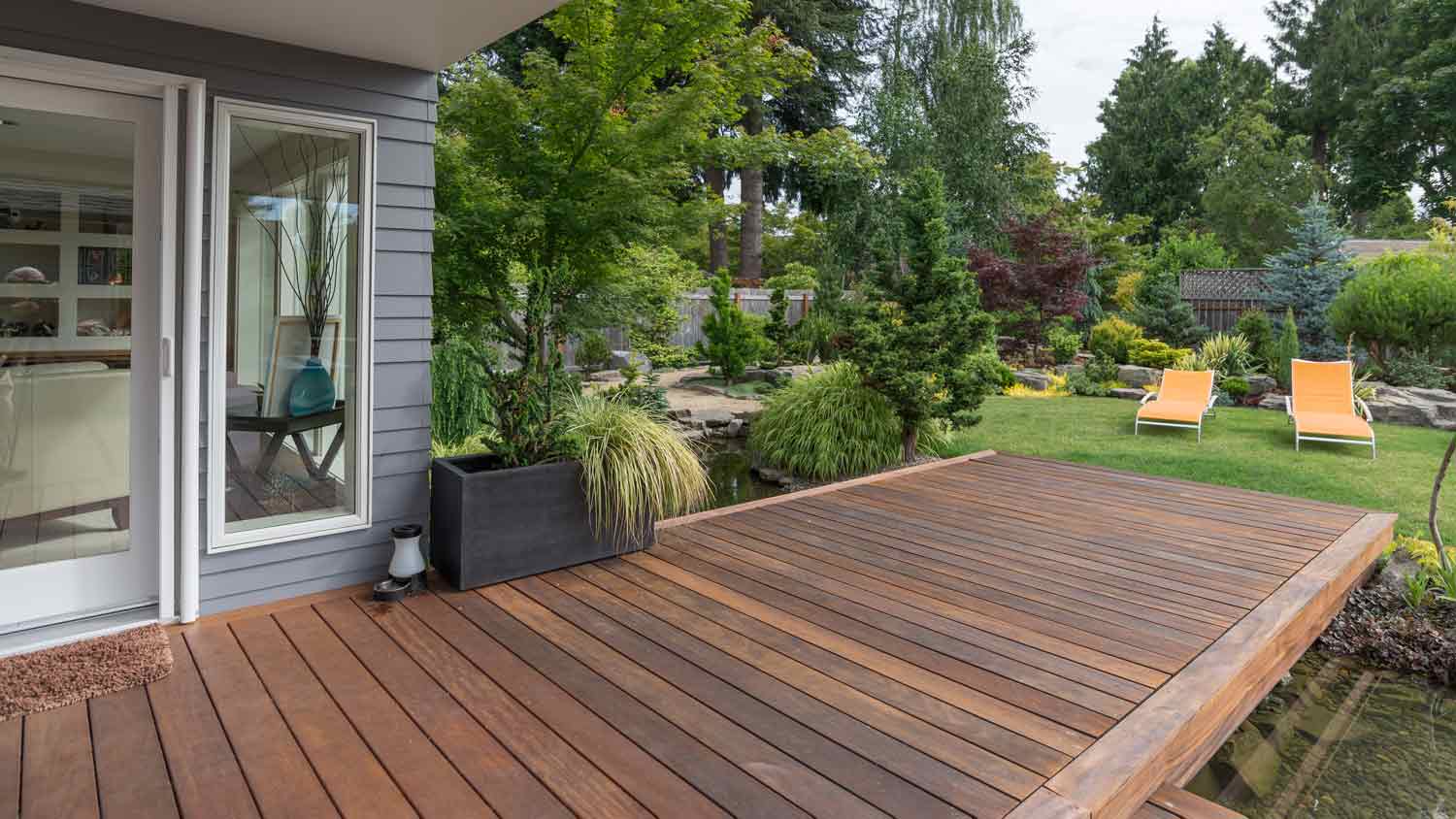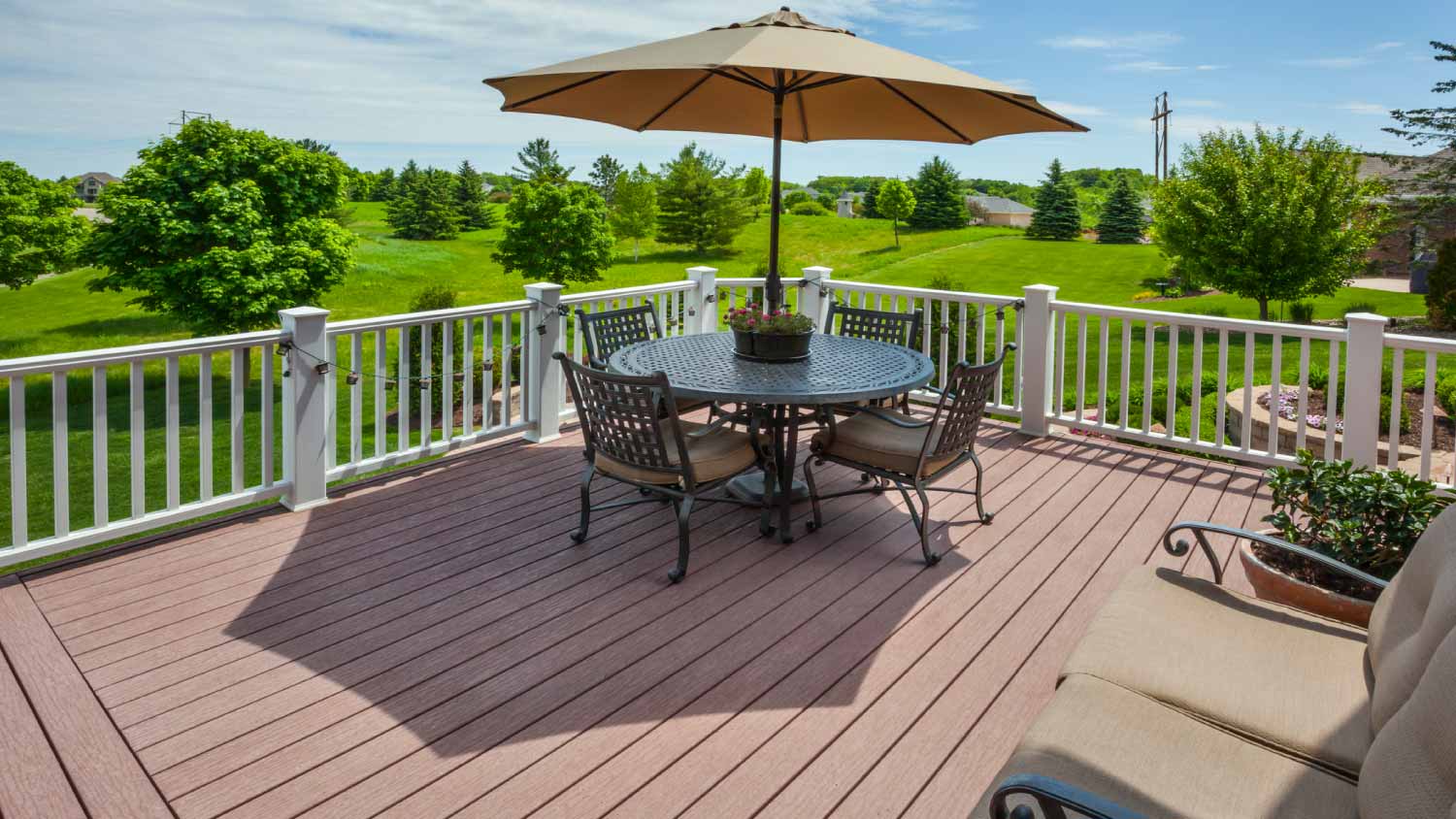
Trellises are structural pieces that add to your garden, but they can also add to your bills. Keep reading to find out how much a trellis costs to build.
Your deck's doing the wave, and not in a good way


Imbalanced moisture is the top reason for deck board cupping.
Improperly installed deck boards and installing green lumber can lead to warping.
When done right, sealing and staining can prevent cupping.
The average cost to repair deck issues is $2,160.
Your deck once looked flawless, but now the boards are curling at the edges or forming a weird concave shape. If you’re frustrated and wondering why your deck boards are cupping, know it is not just a cosmetic issue. Cupping can signal deeper issues that, if ignored, may lead to severe deck damage. Here is what causes cupping and how to stop it in its tracks.
One of the most common reasons for deck board cupping is moisture imbalance. When one side of the board absorbs more water than the other, it dries unevenly, causing the curl upward.
Avoid blocking airflow with skirting or storage under elevated decks.
Seal all sides of the deck boards, including the underside, to limit moisture absorption.
Slope the ground beneath a floating deck to encourage water drainage and avoid pooling.
Deck boards installed too tightly, upside-down, or without proper spacing can lead to cupping as the wood naturally expands and contracts.
Check the crown to ensure boards have the growth rings curving down, not up.
Allow proper spacing between boards of ⅛ inch to ¼ inch for expansion.
Reinstall boards if they are upside-down or tightly jammed together.
Use screws instead of nails to secure boards more firmly and reduce movement.

If your boards are only stained or sealed on the top surface, moisture can still creep in from the bottom or sides, leading to imbalance and cupping.
Seal or stain all sides of each board before installation.
Reapply sealant regularly every 1 to 3 years, depending on climate and product.
Use a high-quality water-repellent sealant designed for outdoor decks.
Don't skip sealing the ends of boards; they are often the most vulnerable to moisture.
Consider hiring a professional to seal your deck.
Water that collects around or under a floating deck contributes to constant moisture exposure, causing boards to cup and warp.
Grade the soil to direct rainwater away from the foundation.
Install a gravel bed or landscape fabric beneath the deck to improve drainage.
Clean out gutters and downspouts nearby to reduce water runoff pooling near the deck.
Add a French drain or trench to divert water away from the structure.
If your deck boards were installed while wet or not properly dried, they can warp or cup significantly as they dry out and shrink unevenly.
Buy kiln-dried or seasoned lumber when building or replacing boards.
Let boards acclimate on-site for a few days before installation to adjust to local humidity.
Replace severely cupped boards if drying alone doesn’t resolve the issue.
Check the moisture content using a meter; wood should ideally be below 19% when installed.
Cupping is one red flag, but there are often other clues that your deck struggles with moisture or structural issues. Here’s what to watch for:
Boards that curl up at the edges or feel uneven underfoot
Splintering or cracking, especially near the board edges
Boards pulling away from fasteners or rising above neighboring boards
Mushy, soft wood or signs of rot underneath
Persistent moisture or mold under the deck
Stain or sealant that wears unevenly or peels prematurely

If large areas of your deck are cupping, it's time to hire a pro. A contractor can inspect for rot, structural damage, or foundation issues and help you decide whether your deck is worth repairing. Homeowners can expect the average cost for deck repairs to be around $2,160, making it a more affordable option than a complete replacement if the damage isn't too far gone.
If repairs aren't enough, building a deck costs about $8,250 on average, depending on the size, materials, and labor cost in your neck of the woods. Wondering who can build a deck? Reach out to a local deck-building professional. These experts can walk you through design options, code requirements, and long-term maintenance plans.
From average costs to expert advice, get all the answers you need to get your job done.

Trellises are structural pieces that add to your garden, but they can also add to your bills. Keep reading to find out how much a trellis costs to build.

Cedar is a popular decking material, best known for its natural wooden look and resistance to rot. So, how much does a cedar deck cost? Find out in this guide.

Thinking about adding a deck to your home? Explore this guide to learn about the average cost to build a deck based on factors like size, material, and labor.

Does your deck make loud popping noises? This is a common and usually natural occurrence. Learn why popping happens in a deck and how to fix it when needed.

Discover steel deck framing costs, including material, labor, and installation factors. Learn how to budget and choose the best option for your home project.

The cost of expanding your outdoor space with an elevated deck depends on the project size and the materials used. Plan your project budget with this guide.